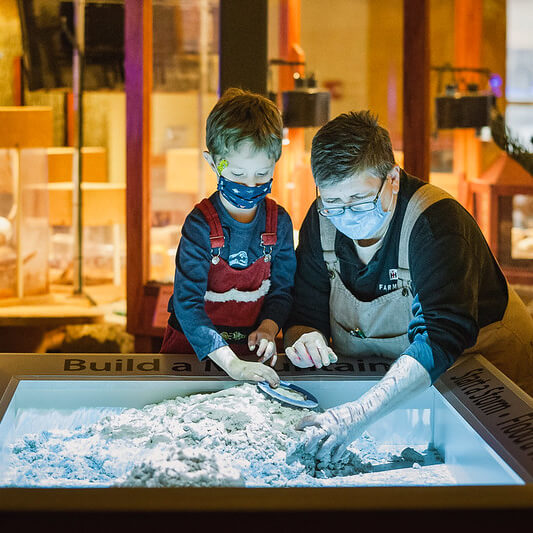
WonderLab visitors enjoying SandScapes. Photo by Andrea Golden.
WonderLab’s first priority is the safety of our visitors. We are diligent about cleaning and sanitizing our exhibits! Because so many of our exhibits are ‘hands-on’ cleaning them can be tricky.
Everyone is encouraged to use hand sanitizer before and after exploring the SandScapes exhibit. Your clean hands protect other visitors against harmful bacteria or viruses, and cleaning your own hards afterwards protects you. But clean hands are just the first step.
So how do we ensure that all the tiny granules of sand are sterilized for the safety of you, your family, and the rest of our guests? Autoclaving!
What is an autoclave?
WonderLab uses a specialized piece of equipment called an autoclave to sterilize the sand used in the SandScapes exhibit. The etymology of the word autoclave is from the French language. The prefix “auto” means self, and “clave” means locking. This mechanism is very similar to the pressure cooker you might use at home to cook dinner!
Autoclaves are used in settings where proper sterilization is essential for safety. They are most commonly seen in science laboratories and health facilities such as hospitals and dentists. Autoclaves can be as small as a microwave or as big as a semi-truck trailer.
The autoclave that WonderLab uses is pictured below. It is roughly six feet high and wide. It is located at Indiana University. We are so grateful to the members of our science community for supporting this important process!
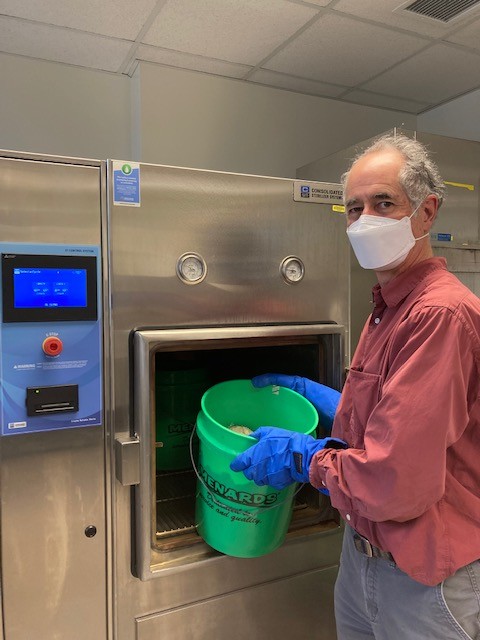
Roger Innes removes buckets of SandScapes sand after sterilization. Photo by WonderLab staff.
Sand is sterilized using steam and very high pressure,. The temperatures reach 122 degrees Celsius / 251.6 degrees Fahrenheit. The pressure is roughly 15 pounds per square inch(psi).
Buckets of sand are placed in the autoclave and the door is closed tightly. Closing the door as tight as possible is vital to the autoclave operating properly. Multiple scientists often work together pulling on the handle with all their strength. If the door is open, even the tiniest bit, the steam will escape and set off the fire alarms.
An autoclave can operate in one of two cycles: “gravity” and “vacuum”. WonderLab uses a gravity cycle to sterilize the sand for this exhibit.
“Gravity” is the most commonly used cycle among the science community. It is used to sterilize all sorts of things such as beakers, test tubes, containers, and even bio-hazardous materials.
The cycle works by plumbing steam into the chamber. This steam rises to the top and air at the bottom is then forced out. Once the steam reaches the right pressure and temperature, sterilization begins.
The high pressures and temperatures in the autoclave make the sand an unfit environment for microorganisms to survive. The sand is sanitized when the microorganisms are killed.
The cycle of the autoclave typically takes one hour to complete.Special color-changing tape lets the user know when the contents of the autoclave have been exposed to a high enough level of heat. The tape contains stripes of lead carbonate, which change into lead (II) oxide, and turns the tape black when the temperature gets high enough.
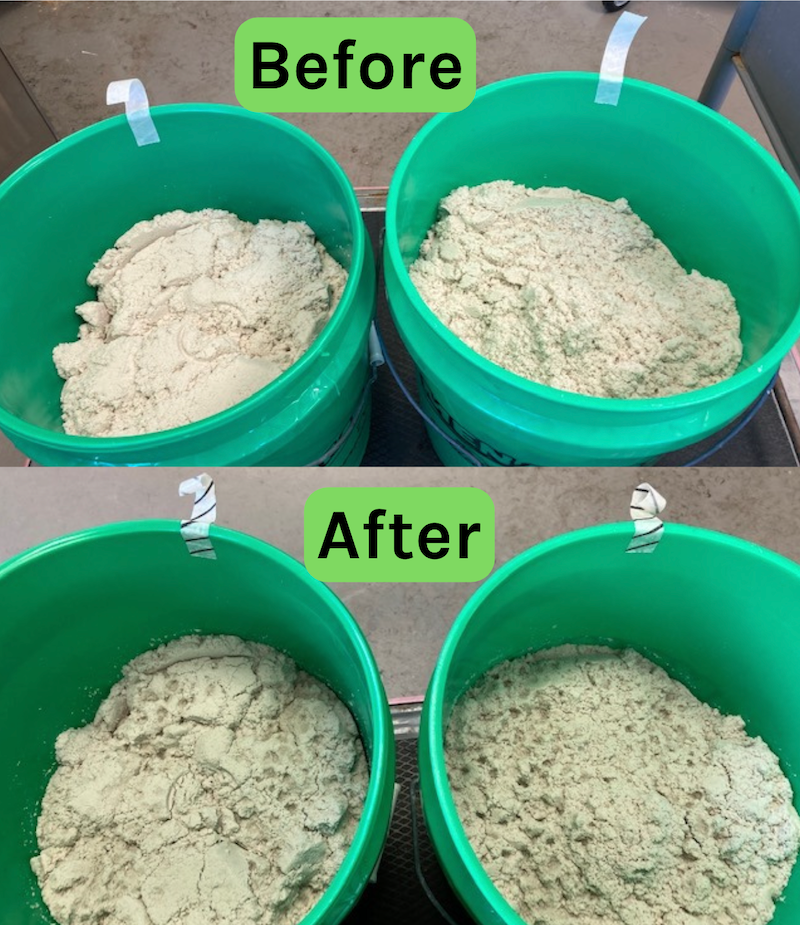
Before and after buckets are run through the autoclave. Note the tape changes color in reaction to the high heat in the machine! Photo by WonderLab staff.
If you look closely at the photo above, you can see the striped tape on the buckets that have been removed from the autoclave after its cycle. Scientists use this tape to ensure the autoclave cycle runs properly and reaches the correct temperature. Looking at the photos above, you can see the before and after of a WonderLab autoclave cycle!
Why do we use an autoclave?
The sand used in the SandScapes exhibit is hydrophobic, meaning the sand particles repel water. This type of sand is produced by adding a thin layer of trimethylhydroxysilane, a chemical that pushes water away from it. The chemical resembles hair-like molecules that stick the sand on one side and repel water on the other.
If you were to submerge the sand underwater, you would notice a bubble of air around the sand. This is because the hydrophobic sand pushes water away. Since the sand is hydrophobic it is difficult to thoroughly cleans it. An autoclave is the best solution to disinfect the Sandscape’s sand.
Autoclaving allows us to reuse the sand multiple times, reducing the amount of sand that ends up in landfills. Autoclaving the sand also is a healthy way for WonderLab to clean the sand without using disinfectants. Disinfectants can contain chemicals that might irritate hands.
Play Safe
When you play in SandScapes you can be sure that the sand has been sanitized and cleaned on a regular basis. But, please, help us by washing your hands before and after you play!
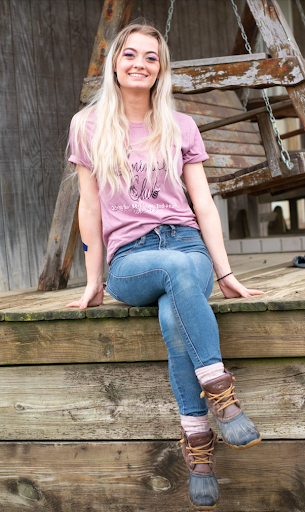
References
Autoclave Overview. (2016, October 31). UCSD Blink. Retrieved March 11, 2022, from https://blink.ucsd.edu/safety/research-lab/biosafety/autoclave/index.html
Trapotsis, A. (n.d.). Steam Sterilization Cycles: Gravity vs. Vacuum Cycles. Consolidated Sterilizer Systems. Retrieved April 1, 2022, from https://consteril.com/steam-sterilization-cycles-part-1-gravity-vs-vacuum/
What is Autoclaving? (n.d.). Qorpak. Retrieved March 11, 2022, from https://www.qorpak.com/pages/autoclaving
Widener, A. (2015, March 23). What’s That Stuff? Magic Sand And Kinetic Sand. C&EN. Retrieved April 1, 2022, from https://cen.acs.org/articles/93/i12/Magic-Sand-kinetic-Sand.html

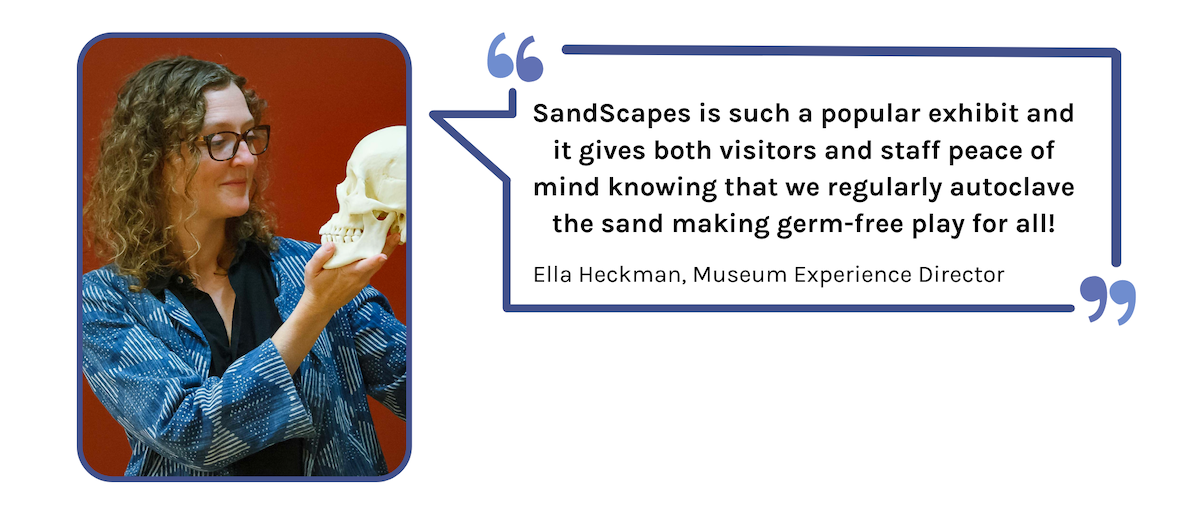
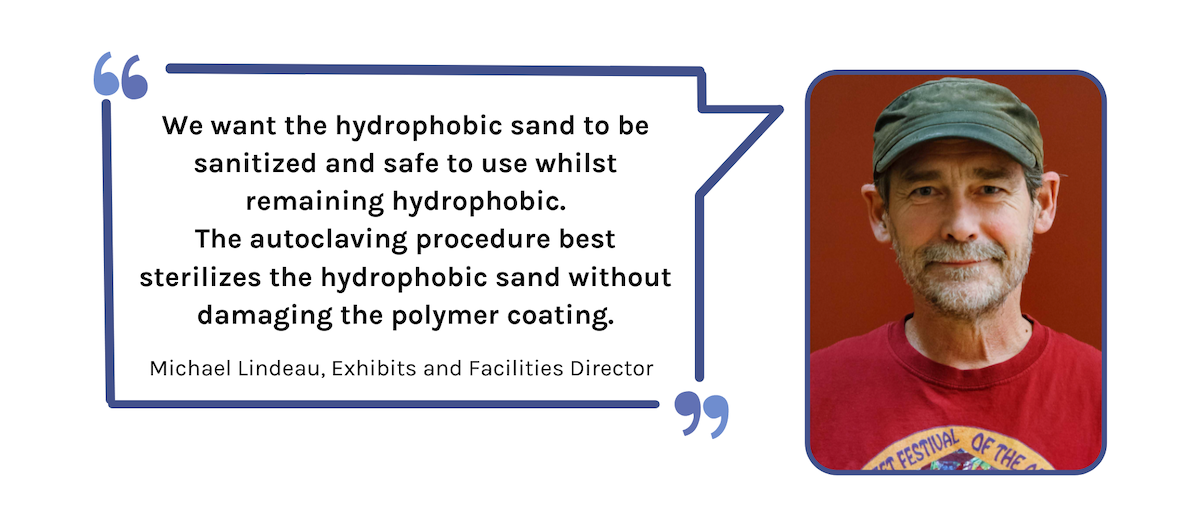
Leave A Comment